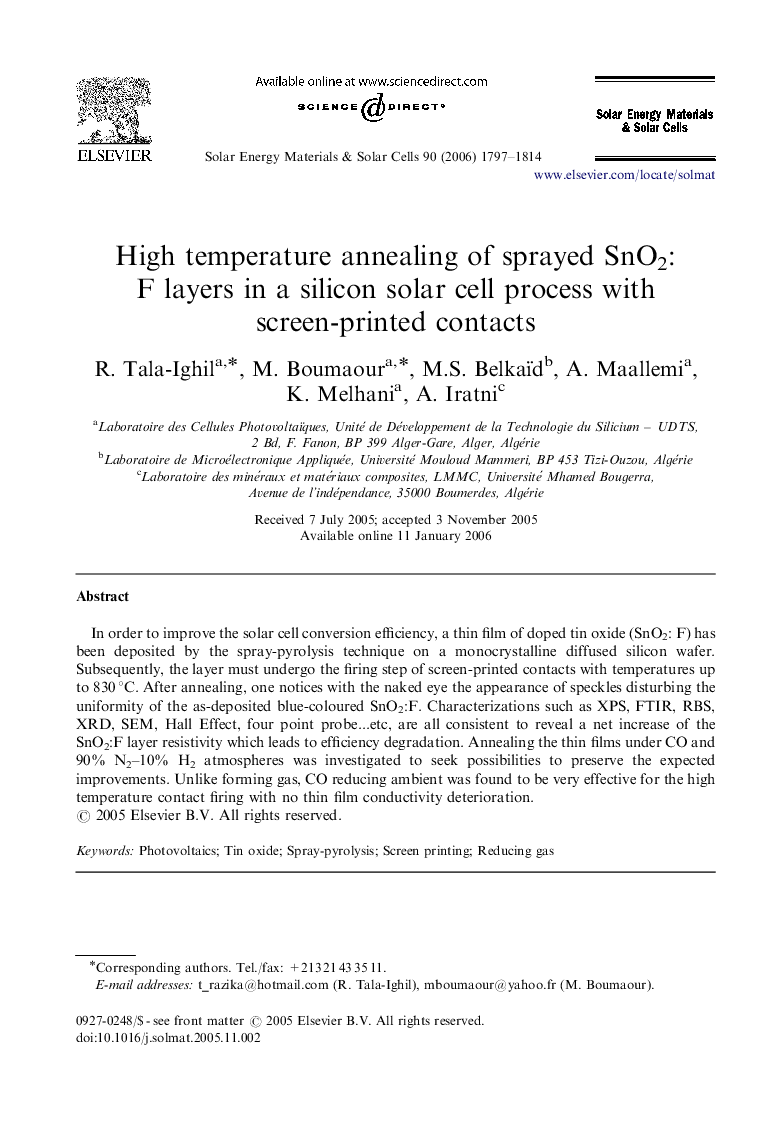| Article ID | Journal | Published Year | Pages | File Type |
|---|---|---|---|---|
| 81229 | Solar Energy Materials and Solar Cells | 2006 | 18 Pages |
In order to improve the solar cell conversion efficiency, a thin film of doped tin oxide (SnO2: F) has been deposited by the spray-pyrolysis technique on a monocrystalline diffused silicon wafer. Subsequently, the layer must undergo the firing step of screen-printed contacts with temperatures up to 830 °C. After annealing, one notices with the naked eye the appearance of speckles disturbing the uniformity of the as-deposited blue-coloured SnO2:F. Characterizations such as XPS, FTIR, RBS, XRD, SEM, Hall Effect, four point probe...etc, are all consistent to reveal a net increase of the SnO2:F layer resistivity which leads to efficiency degradation. Annealing the thin films under CO and 90% N2–10% H2 atmospheres was investigated to seek possibilities to preserve the expected improvements. Unlike forming gas, CO reducing ambient was found to be very effective for the high temperature contact firing with no thin film conductivity deterioration.
